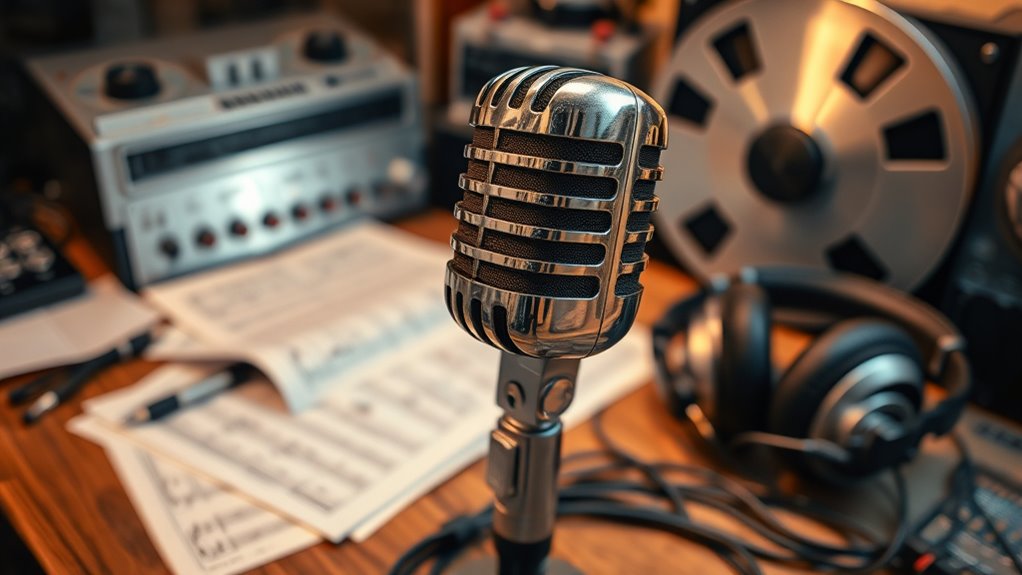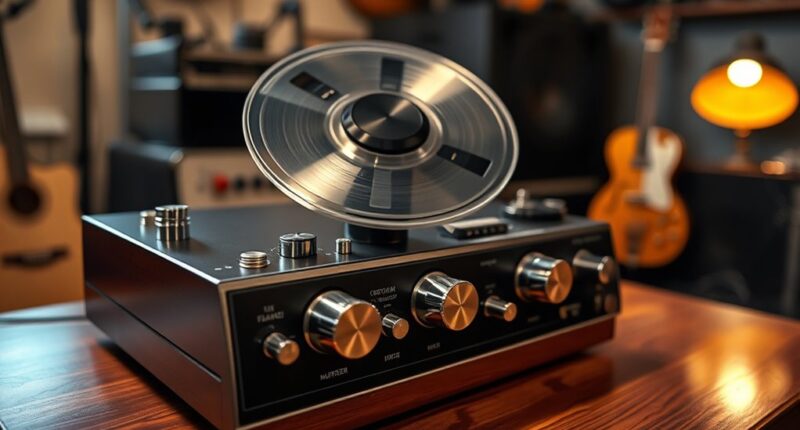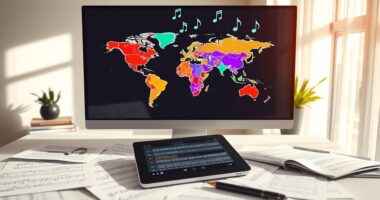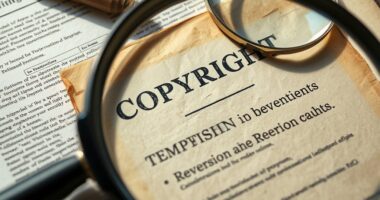Understanding whether an audio piece is a sound recording or a composition is key to managing rights properly. A sound recording captures the actual sound, like a live performance or studio track, and is owned by the artist or label. A composition includes the melody, lyrics, or underlying music, owned by songwriters or publishers. Recognizing the difference helps you know what permissions you need and how to license it legally, so stick around to learn more about protecting your rights.
Key Takeaways
- A sound recording captures the actual audio performance, while a composition is the underlying musical or lyrical work.
- Rights for sound recordings are usually owned by record labels or artists, whereas composition rights belong to songwriters or publishers.
- Licensing a sound recording involves master use licenses, while licensing a composition involves rights from songwriters or publishers.
- Clarifying whether content is a sound recording or a composition determines the appropriate rights to secure and legal usage.
- Proper identification prevents legal issues and ensures lawful use in projects, broadcasts, or media involving audio content.

Have you ever wondered whether a piece of audio is a simple sound recording or an original composition? Understanding this distinction is essential because it determines who owns what rights and how you can use that audio legally. When it comes to ownership distinctions, a sound recording refers to the actual recording of sounds—think of it as the tangible file you hear, whether it’s a live performance, a studio session, or a remix. An original composition, on the other hand, is the underlying musical or lyrical work—the melody, the lyrics, the arrangement—that creates the foundation of the audio. Recognizing which of these categories applies affects everything from copyright protection to licensing procedures. Knowing the difference is crucial because ownership rights are divided based on whether you’re dealing with a sound recording or a composition. For a sound recording, rights are typically held by the record label, producer, or artist who made the recording. Meanwhile, the composition rights belong to the songwriter, composer, or publisher. This separation means that licensing procedures can become complex, especially if you want to use a recording in a project or broadcast. You might need to secure a master use license for the recording itself and a synchronization license for the underlying composition if you’re pairing it with visual media. Knowing who owns each part helps you avoid legal pitfalls and guarantees you’re obtaining the appropriate permissions. The licensing procedures for these rights differ because they are managed by different entities. For example, the owner of a sound recording often grants licenses through record labels or rights management organizations. These licenses cover how the recording can be used, such as in films, commercials, or online streaming. Conversely, licensing a composition involves obtaining rights from songwriters or publishers, often managed by performing rights organizations (PROs) like ASCAP or BMI. When you’re trying to clear rights, you need to clarify whether you’re dealing with the recording owner or the composition owner to follow the correct licensing procedures. This distinction is essential because it affects the scope and cost of permissions. Ultimately, understanding the difference between a sound recording and a composition helps you navigate the legal landscape of audio rights. It guarantees you respect ownership distinctions and follow proper licensing procedures. Whether you’re a content creator, producer, or just someone looking to use audio legally, knowing who owns what and how to secure rights can save you from costly legal issues down the line. By being clear on these points, you’ll be better equipped to handle rights management confidently and responsibly.
Frequently Asked Questions
How Do Licensing Rights Differ Between Sound Recordings and Compositions?
You need to understand that licensing rights differ for sound recordings and compositions. For compositions, you typically acquire mechanical rights and synchronization licenses, which allow you to reproduce and sync the music with visual media. Sound recordings, however, require separate rights, often managed by record labels. You must secure proper licenses for both to use the actual recording and the underlying composition legally.
Can a Song Be Both a Sound Recording and a Composition Simultaneously?
Think of a song as a double-sided coin—you can own both sides. Yes, a song can be both a sound recording and a composition simultaneously. This means you hold ownership rights for the actual recording and the underlying composition. Licensing distinctions are vital here, as they determine how each side can be used or shared. Understanding this helps you protect your rights and control how your music is enjoyed and monetized.
Who Owns the Rights to a Cover Version of a Song?
You typically own the rights to a cover song if you’ve secured proper licensing agreements, which give you permission to reproduce and distribute your version. However, you still need to respect the original songwriter’s rights. Usually, the publisher holds the rights to the composition, while you own the sound recording of your cover. Make sure to obtain mechanical licenses and clear all rights to avoid legal issues.
How Do International Copyright Laws Affect These Rights?
International copyright laws are like a tapestry woven with many threads, affecting your rights across borders. These laws, through treaties like the Berne Convention, promote copyright harmonization, ensuring your work receives consistent protection worldwide. They simplify licensing and prevent rights disputes, making it easier for you to share your music internationally. By understanding these treaties, you can better navigate global markets and safeguard your creative efforts wherever you go.
What Is the Process to Register a New Sound Recording or Composition?
To register a new sound recording or composition, you start by ensuring your metadata is accurate, capturing all necessary details. Next, follow the registration procedures set by your country’s copyright office or relevant organization. This typically involves submitting your work, filling out forms, and paying any applicable fees. Accurate metadata helps protect your rights, making registration more straightforward and ensuring your work is properly documented for future legal or licensing needs.
Conclusion
Understanding whether you’re dealing with a sound recording or a composition is like knowing if you’re holding a photograph or a song’s sheet music. Each holds its own rights and stories, waiting for you to discover their secrets. So, next time you hear that catchy tune or cherish that unique recording, remember—you’re holding more than just sound; you’re holding a piece of artistic soul. Protect it wisely, and let your creative journey sing on.









